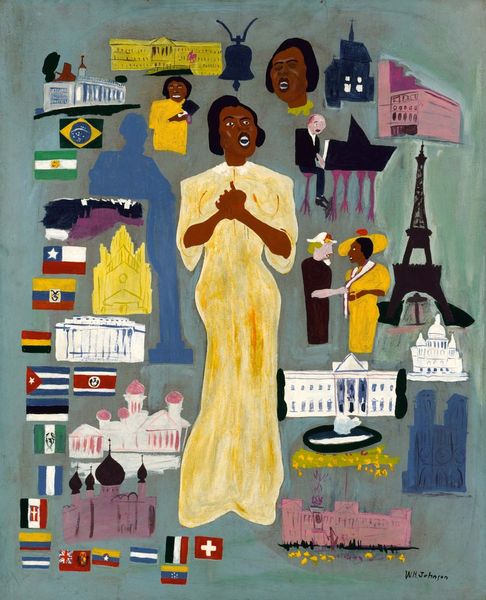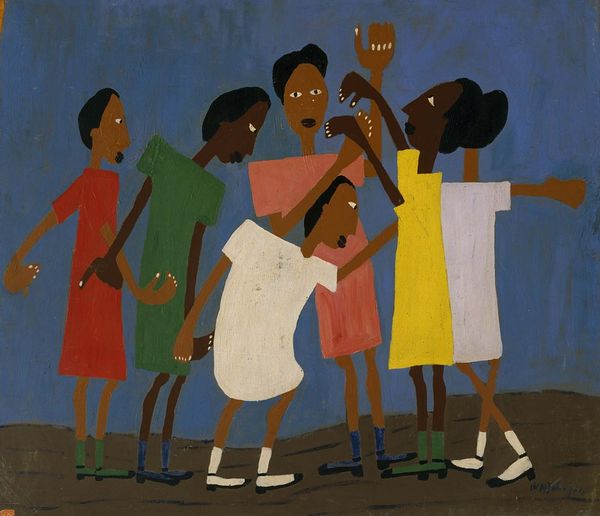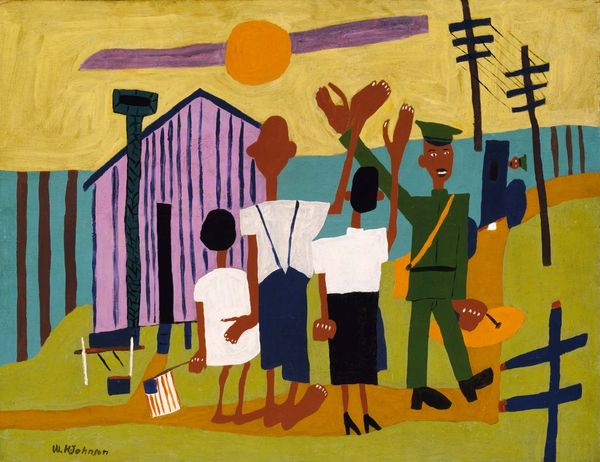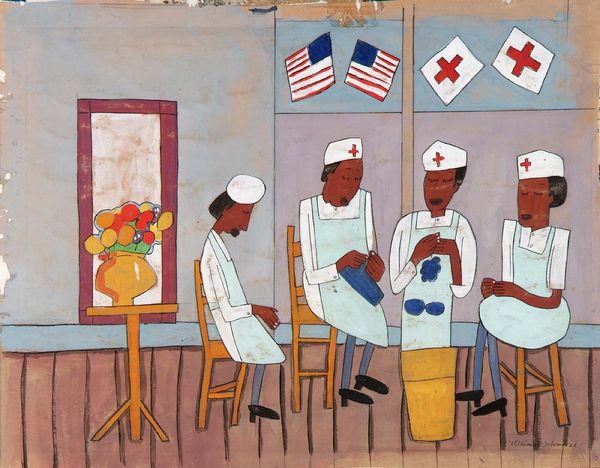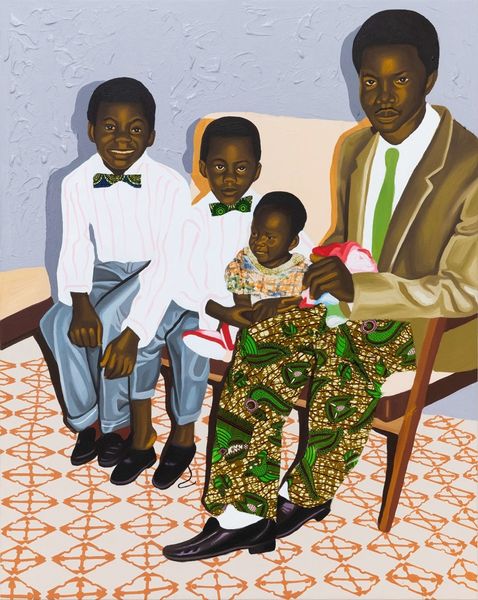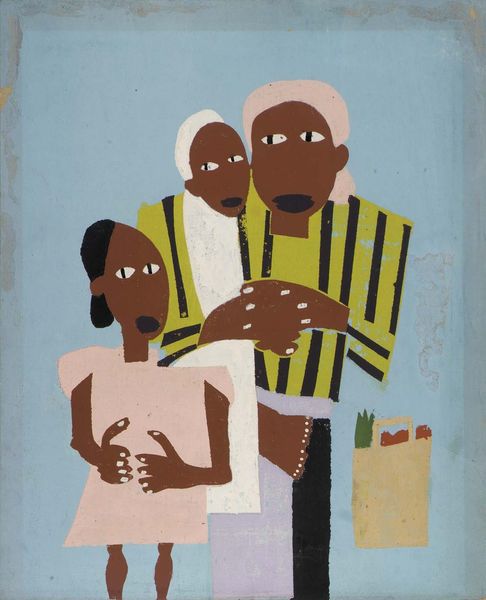
Copyright: William H. Johnson,Fair Use
Art Historian: Editor: Editor: We're looking at William H. Johnson’s "Lift Up Thy Voice and Sing" from 1944. It’s an acrylic painting featuring a group of figures in front of an American flag. The figures are quite stylized. I am curious: What grabs your attention about the materials and construction? Art Historian: The starkness of the acrylic, applied with such flat, graphic intentionality, is crucial. Johnson simplifies form, nearly flattening the figures. It's folk art inflected with a canny understanding of the machine age, as if mass production concepts shaped the style. What's the relationship between labor, this scene and materiality of the acrylic medium for you? Editor: That's interesting because, to me, it almost feels like a print because of the bold colors and shapes! With that said, it prompts me to examine his labor because folk art suggests that the work will be made to the very best of one's ability, as a way to reflect love into labor. Would you say it challenges notions of "high art"? Art Historian: Precisely. Think about Johnson making choices based on the accessibility and affordability of materials during wartime, acrylic paint was cheap and easy to handle. Further, consider the relationship between the art, accessibility, folk traditions, and fine art. Now how does seeing the materiality alter your interpretation? Editor: Seeing it that way shifts everything. It connects to broader questions about who gets to create, who gets celebrated and which materials matter. Also, considering the title with respect to art, that in itself is interesting and important! Thanks, I hadn't thought of that before! Art Historian: Indeed. Material choices, viewed within their economic and social contexts, reshape how we appreciate this seemingly straightforward scene. Hopefully, examining folk traditions this way challenges old constructs of folk versus fine.
Comments
No comments
Be the first to comment and join the conversation on the ultimate creative platform.

